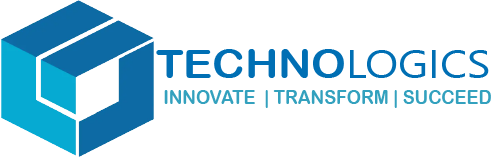Resume Writing
Resume Writing
A Resume is one of the most important tools to assist you in getting an interview for a job. It brings together your education, work experience, interests, and skills into one comprehensive but brief outline for the employer to read. A Resume should be a good reflection of who you are, since it is the first impression a potential employer has of you, so take your time when preparing your Resume.
The resume should be a brief but informative summary of your education, employment or volunteer exexperience, and any specialized skills. The layout should be attractive and easy to read or scan. It should generate the kinds of questions you want to answer during an interview.
Resume Formats
Chronological: The most accepted format, it lists education history and work experience in reverse chronological order, i.e., with the most recent items first. This format is best for most candidates, especially those entering the job market or changing jobs within a career field. Career Services recommends the chronological format, since it is more straightforward.
Functional: This format organizes your experience into skill areas, regardless of the specific job in which the skill was demonstrated. Employment history is then briefly summarized in reverse chronological order. Functional resumes are occasionally helpful for candidates with complex work histories or for those who are changing careers or re-entering the job market. Most employers regard functional resumes as hard to decipher, and they suspect the writer is hiding or exaggerating things.
Basic Elements of a Resume :
- Contact Information
- Objective
- Education
- Experience
- Skills
- Projects
- Training & Certification
- Research
- Honors & Awards
- Intrests.
- Declaration
- References
Contact Information:
The top of your resume should include the following information:
- Full Name
- Phone number with country code
- Location (City, State, Zip Code)
- Email Address( professional id )
- LinkedIn profile URL
It might seem obvious, but job seekers sometimes forget a key piece of contact information in this section. Double check and make it as easy as possible for recruiters to contact you for a job interview.
Include a personal phone number with country code, never a work number. Add your city, state, and zip code (e.g. “Jayanagar, Bangalore 560041”). This is important as some applicant tracking systems allow recruiters to filter candidates based on location. Recruiters will always start with local candidates first. If you’re relocating from another area, list both your current location and your future location.
Use a professional-sounding email address. An email address based around your name is ideal, such as jackieromano12@email.com. Your “fun” email address might work perfectly fine in your personal life, but “beersnob88” or “biebersuperfan” might not cast you in the most professional light. Even using an email client that is considered outdated — like AOL or Hotmail — could hurt your chances. Consider creating a free Gmail account for your job search.
If a recruiter is intrigued by your qualifications, they will look up your online profiles. All job seekers should create a strong LinkedIn profile and include the URL on their resume. This will make the recruiter’s life a little easier and help them cross check the claims on your resume.
OBJECTIVE
The objective is a one‐sentence declaration of the type of job that you are seeking. It appear beneath the heading and is as specific as possible, noting the company you are applying to, the job title you are seeking and skills you would like to use in that job.It can also Include type of position or occupational field you wish to enter, skills, experience, and background you have to offer, and any special interests or areas of focus.
EDUCATION
This
section
of
a
Resume
lists
all
the
colleges
you
have
graduated
from,
along
with
their
addresses
and
any
degrees
you
have
earned
with
the
date
you
attained
them.
If
you
are
in
the
process
of
attaining
a
degree,list
the
expected
date
that
you
will
receive
it.
Do
not
list
your
high
school
unless
it
is
of
importance
to
the
employer
that
you
are
applying
to.
EXPERIENCE
Your experience, regardless of how you acquired it (full time or part time jobs, internships, and community or college service) is usually of chief interest to the reader. For each position, include: Job Title (followed by dates of employment), Employer Name and Designation. Emphasize (put first) either employers or job titles, but be consistent! Describe roles & responsibilities, duties and accomplishments, preferably using list format with bullets.
Emphasize skills and experience related to the job you want and to the employer’s needs. have earned with the date you attained them. If you are in the process of attaining a degree,list the expected date that you will receive it. Do not list your high school unless it is of importance to the employer that you are applying to.
SKILLS
Skills Of great interest to employers! Indicate hardware and software knowledge, fluency in foreign languages, or other technical skills. If you have several of each, use separate categories.
PROJECTS
Projects aren’t just for Laterals. They’re a great resume addition for Fresher’s Here you will highlight on experience with different type of major projects, Hardware & Software, and tools and technologies..
Those 3-4 extra lines of Project Description will really add some wow factor.You will start with the most recent & major project and continue listing down all the projects till the oldest one. Maximum no of projects to be listed in resume is 3.
List of items required:
Project Title:
Project Category : Major/Minor
Technical Skills Used:
Project Description:.
CERTIFICATIONS
List professional certifications or licenses with dates received. To tailor your resume to a specific job, you may include a list of “relevant courses.” This also fills space if you have little experience or Fresher.
RESEARCH
If applicable, you may include special projects or research, highlighting significant relevant classroom learning experiences such as research projects, independent study, special presentations, major papers
HONORS/AWARDS/ACCOMPLISHMENTS
Use one or more categories as appropriate, highlighting achievements such as scholarships, leadership roles in clubs, campus/community organizations, sports or other accomplishments. Put the most related and impressive accomplishments
INTERESTS
Optional !! List interests only if you are really knowledgeable about something or very good at it.
How do I make my resume look professional ?
- Include no personal information: age, health, marital status, height, weight, religion.
- Never use the first person “I.” Do not use full sentences. Eliminate all unnecessary words (a, the).
- Never lie or exaggerate.
- Use “bullets” (•, ♦, *, −) for listing items under a heading description, such as experience.
- Proofread carefully. Grammatical, content and typographical errors may eliminate you immediately from consideration for an interview. Ask others to proofread the resume as well.
- The successful resume is one that results in interviews. Does your present you as an accomplished person? Is it easy to read, pleasing to the eye, devoid of all errors, current, honest?
Grammer
- Apostrophes indicate possession, contraction or pluralized letters and numbers. It’s easy to confuse it’s (it is) with its (possessive of it). Generally when nouns are possessive, the placement of the apostrophe indicates whether or not the noun is also plural. (Student’s indicates that something belongs to one student, while students’ indicates something belongs to more than one student.)
- A verb must “agree with” its subject: Marie supervises, not Marie supervise. He does, but they do. These rules apply even when subject and verb are separated by other words and phrases. Pronouns must agree with the nouns to which they refer: “A student must type their own resume” does not make sense because only one student is represented by their in this case. The correct sentence would be, “A student must type his or her own resume.”
- Are any of your sentences overly long or overly short? Some short sentences can be combined with other sentences that have related ideas. Some, but not all, overly-long sentences are “run-on,” which means that two independent clauses (a group of words containing a subject and predicate that can stand alone as a sentence) are fused together.
| INCORRECT “Run-on sentences” | GRAMMATICALLY CORRECT SENTENCES |
| • The sentences were too short I combined them.
• The sentences were too short however I combined them. |
• The sentences were too short. I combined them.
• The sentences were too short; I combined them. • The sentences were too short and I combined them. • Because the sentences were too short, I combined them. • The sentences were too short; however I combined them. |
Proofreading
- Does your computer screen have green squiggles under words which may indicate grammatical errors? (Sometimes the squiggles are indicating spacing errors.)
- Are there red squiggles under any words which may indicate spelling errors? Remember that ‘spell check’ will not catch every error. As long as the letters make up a real English word, it is okay with ‘spell check.’ This does not mean it will be okay with the reader! We see letters that contain grate ideas. Such writers may not get two far with there poor writing skills. (Note that my computer spell check totally misses the three outstanding spelling errors in the last two sentences.)
- Does each sentence have a clear message? Is this exactly the message you want to convey? Are the related ideas grouped together? Proofread again. Ask a friend to proofread it too.





